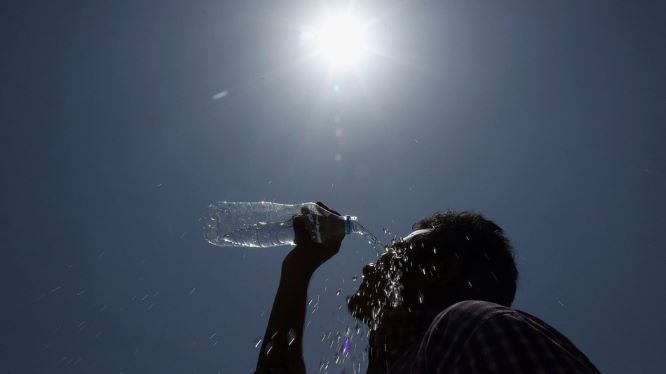

The infamous Indian summer has made the temperature in Churu, Rajasthan cross the 50 degrees with 50.8 ℃ (see inset image below). Reminiscent of 2015 & 2016 heat waves which claimed more than 20,000 lives, the temperatures have remained above 45 degrees for more than a week now.
Rajasthan, Madhya Pradesh and Maharashtra are amongst the worst hit as they are facing hot temperatures as well as the longest spells of dry weather this year. While, others like parts of Punjab and Haryana, Vidarbha region of Maharashtra, Delhi, Jammu & Kashmir, Uttar Pradesh, Himachal Pradesh, Uttarakhand and Gujarat, experienced “severe” heatwave conditions through this weekend till now.
The three-month, pre-monsoon season, which ended on May 31, was the second driest in the last 65 years, India’s only private forecaster, Skymet, said, with a national average of 99 mm of rain against the normal average of 131.5 mm for the season.


The temperatures have caused the IMD to ring the emergency bell. Indian Meteorological Department has issued an alert stating that the heat wave will persist for few more days.
A red-color warning has been issued for Madhya Pradesh and western Rajasthan. The IMD has four color codes to indicate the severity weather systems red for extremely severe weather conditions, followed by amber, yellow and then green which denotes normalcy. The IMD has issued an amber-coded warning for eastern Rajasthan and Vidarbha in Maharashtra. A yellow-color coded warning for Marathwada, Surat, and Kutch, Uttar Pradesh, Himachal Pradesh, Jammu & Kashmir, Punjab, Haryana and Delhi.
The worrying fact can be grasped by the fact that eight of the 15 hottest places in the world on the same day were in India, according to weather monitoring website El Dorado.
Why this Heat Wave?
[related_post]
There are 2 major reasons: First the dearth of pre-monsoon rains nationwide, and also the hot and dry winds that move into the mainland from the northwest side. The low rainfall has also reduced the soil moisture, which may increase the likelihood of heatwave conditions in a given place.
Heat waves happen when a system of high atmospheric pressure moves into an area. This high-pressure system forms what is best described as a “cap” over the region — trapping heat that would otherwise escape into the atmosphere where it would otherwise cool off before coming back down to the surface. This environment of minimal heat circulation also reduces the chance of precipitation and rain, causing the heat to buildup, which we experience as a heat wave.
During summers, these buildups tend to change more slowly — the heat lingers on, and temperatures may not cool off enough at night to offer a sense of relief.
Also Climate Change
While climate deniers will not believe it; however, the recurrence of heatwaves and increase in its severity due to Global Heating. Climate scientists also have done studies to substantiate that climate change increases the risks of extreme weather events. After having that said, the link between heat waves and climate change is the easiest of weather effects to explain. When the temperature spikes, the greenhouse effect from emissions of carbon and water vapor store more heat, hence the lingering heat ‘cap’ as explained earlier. Episodes of heat waves are growing more common as climate change intensifies, according to a study in Science.
Why India?
The fact again is GLOBAL HEATING. While surface temperatures around the world have escalated by 0.6 degrees Celsius, India’s average surface temperature has risen by 0.8 degrees Celsius from 1880 to 2018. This is making ‘caps’ of low-pressure and high-pressure areas more stronger shooing away monsoons rain or changing its course and intensity.
So the heatwave, according to skymet, with no changes expected in wind direction will continue over many parts of India, with some regions like Rajasthan and Madhya Pradesh experiencing severe heat till Friday before temperatures return to under 45℃.
In a key step toward advancing clean energy adoption, Ahmedabad headquartered IRM Energy Ltd has…
Biofuels conglomerate Aemetis has announced that its subsidiary in India – Universal Biofuels – has…
The Greater Noida Industrial Development Authority (GNIDA) has commenced construction of a 300-tonne-per-day (TPD) bio-CNG…
The World Earth Day – with this year’s theme on ‘Our Power, Our Planet’ –…
In a significant step toward promoting decentralized waste management and clean energy, Tata Steel UISL…
Jaipur headquartered bioenergy player Rajputana Biodiesel Ltd has announced that its subsidiary, Nirvaanraj Energy Private…